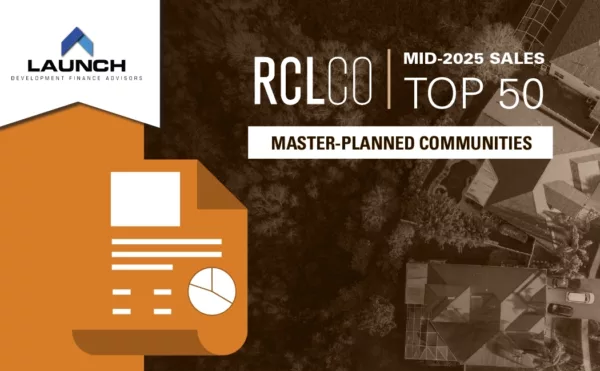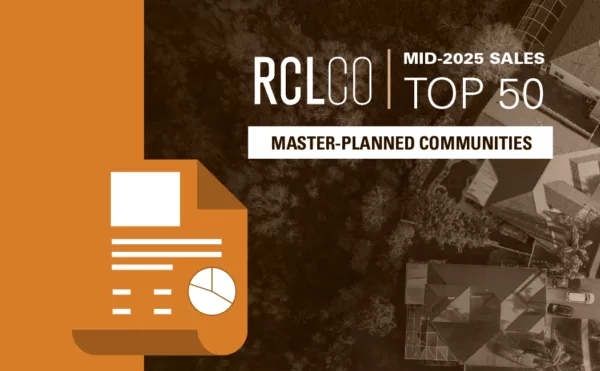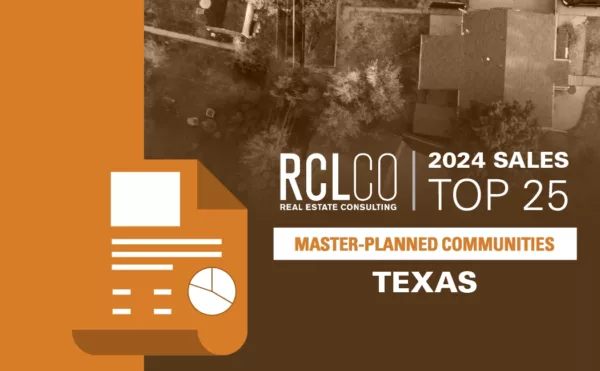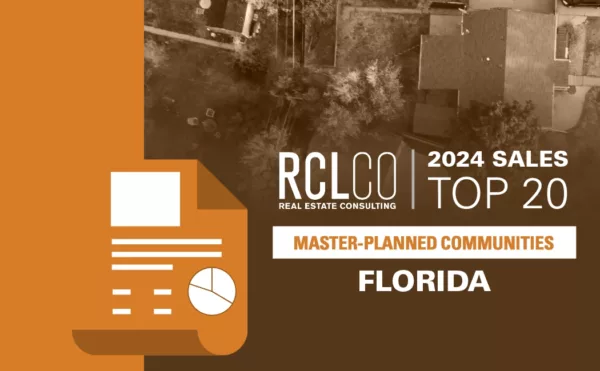
July 31, 2024
In Summary
- New home sales among the 50 Top-Selling Master-Planned Communities remained similar to the pace set by the top communities in the first half of 2023.
- Sales among top-MPCs outperformed the broader new home market, as the pace of single-family home sales nationally were 1.1% lower through the first half of 2024 compared to the prior year. June new home sales nationally experienced a 7.4% decline compared to 2023, while master-planned communities held strong.
- Lakewood Ranch is the top-selling all-ages community in the country with 1,238 sales, while it is estimated that The Villages retains its place as the top-selling community overall, with sales predominantly to 55+ buyers.
- Sunterra in Houston, TX has earned the third-place rank with 774 sales – a 16% increase over the same time last year.
- The Houston MSA was the top-performing metropolitan area with 13 communities in the Top-50, representing over 4,500 sales, or almost 24% of all sales among ranked MPCs.
- The state of Texas represented about 39% of sales among ranked communities, followed by Florida at 36%.
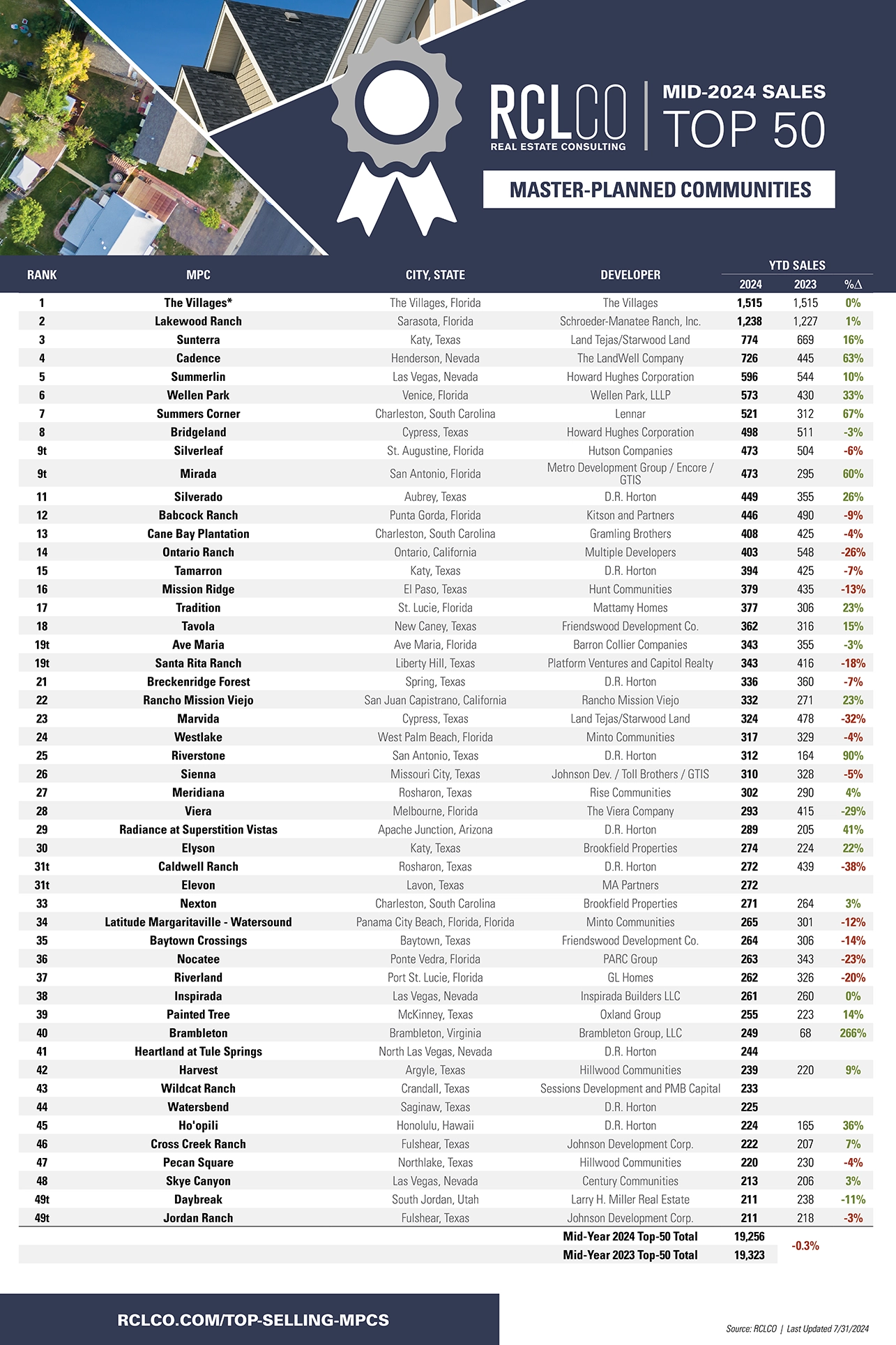
Every year since 1994, RCLCO has conducted a national survey identifying the top-selling master-planned communities (MPCs) through a rigorous search of high-performing communities in each state. Each year we report the annual sales among the Top-50 communities at the end of the year, as well as publish this mid-year update in July. For this mid-year 2024 report, we have surveyed MPCs throughout the country to establish the current rankings as an update to our The Top-Selling Master-Planned Communities of 2023 published in January 2024.
The chart above summarizes RCLCO’s list of the 50 top-selling communities through the first half of 2024, including a comparison with their home sales through the first half of 2023. While the pace of new home sales overall is currently below 2023 levels, through the first half of 2024 the top-50 master-planned communities are nearly maintaining last year’s pace. New home sales among the current top-50 communities are only 0.3% lower than the top MPCs of Mid-Year 2023, while the broader new home market nationally sold 1.1% fewer homes in the first half of 2024 compared to the first half of last year. The latest sales data as reported by the U.S. Census Bureau indicated a more substantial drop for the month of June, which saw 7.4% fewer sales than June the previous year.
Sarasota, Florida’s Lakewood Ranch claims the top spot among all-ages communities with 1,238 sales, a 1% increase over last year, while The Villages, an active adult community in Central Florida, is once again the overall top-selling community in the country with an estimated 1,515 sales[1] to primarily 55+ buyers. Sunterra, located in Houston, Texas, earned the third-place rank with a 16% increase in sales compared to the first half of 2023.
Houston, Texas is once again the top-performing metropolitan area with 13 communities in the Top-50, representing over 4,500 sales, or almost 24% of sales among ranked MPCs. The Las Vegas, Nevada metropolitan area follows behind with just over 2,000 sales, representing 11% of sales among ranked MPCs. Notable performances thus far in 2024 include Lennar’s Summer’s Corner in Charleston, South Carolina, which experienced a 67% increase in sales ranking the community 7th in the nation following a 25th place finish in 2023. Likewise, Metro Development Group’s Mirada community in San Antonio, Florida experienced an impressive 60% increase in sales through the first half of the year, ranking the community within the Top-10 for the first time.
[1] RCLCO estimate based on available data.
Top-Selling Master-Planned Communities of Mid-Year 2024
As we crest the midpoint of 2024, sales among the 50 Top-Selling Master-Planned Communities (MPCs) have maintained a similar pace to that set by the top-selling communities in the first half of 2023. This stability in sales underscores the continued appeal and resilience of MPCs in a real estate market still constrained by elevated interest rates and declining homebuilder sentiment.
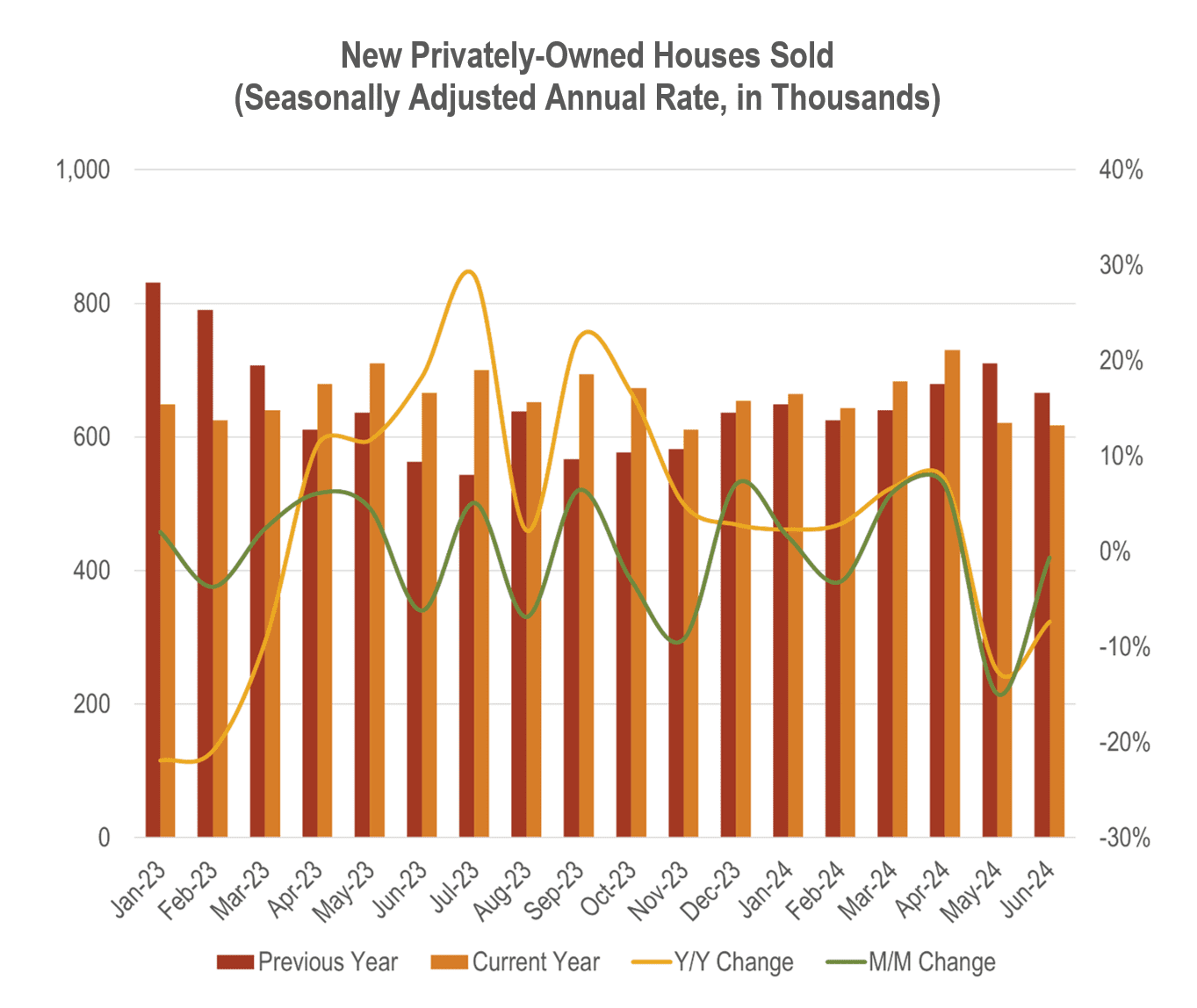
In addition to the slower pace of sales set by the broader new home market, new single-family permitting activity has experienced five consecutive months of declines since peaking in January. This trend is largely a reversal compared to 2023, where permit activity had seen six consecutive month-over-month increases through the first half of the year. Given that permits typically act as a leading indicator of new home production, this trend of recent month-over-month declines could suggest a more modest forecast for overall new home volume in 2024. However, as a “safe haven” for consumers when markets slow, the outlook for Master-Planned Communities specifically may be viewed with more optimism as evidenced by the stronger performance of Top-Selling MPCs so far this year.
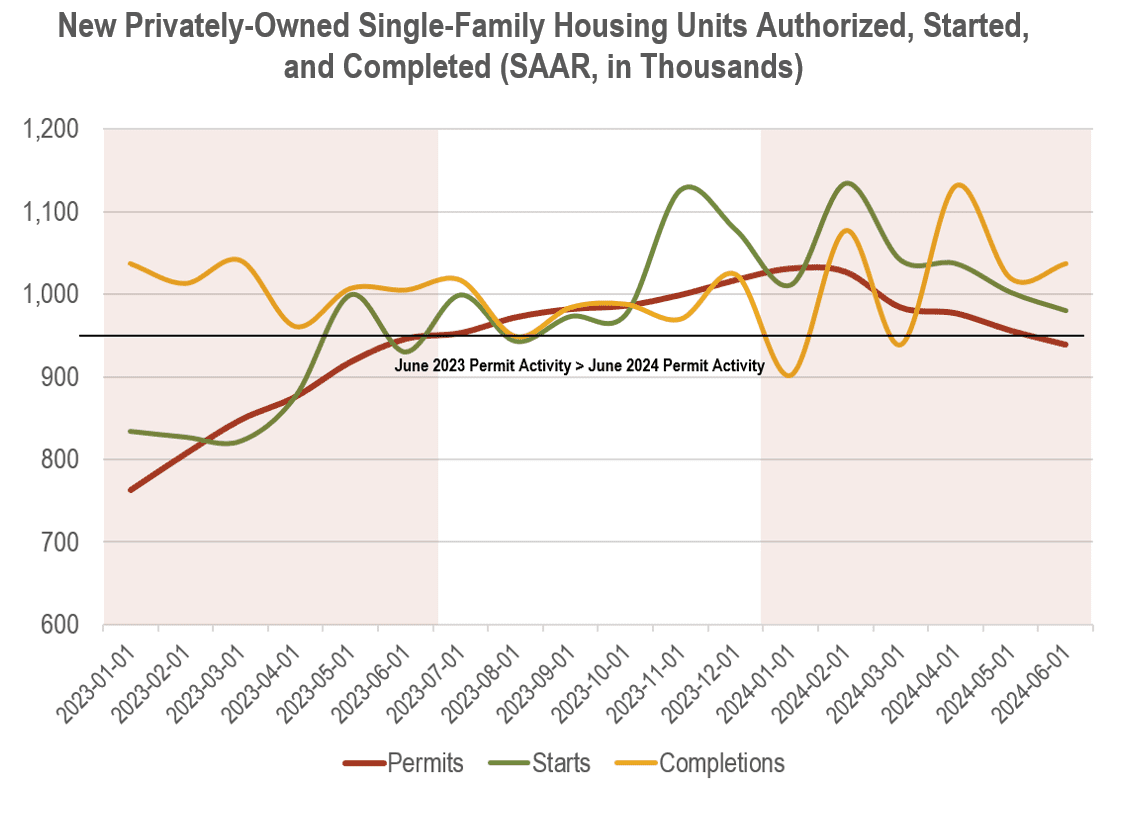
In response to current market conditions, builders have continued to adjust their pricing strategies to bolster home sales. According to NAHB’s July survey, 31% of builders reduced prices in July, up from 29% in June and 25% in May. This trend indicates an increasing willingness among builders to offer price cuts to attract buyers and, coupled with the broader strategy among builders of introducing smaller and more affordably priced homes to the market, has resulted in a lower median new home sales price in June 2024 compared to June 2023.
Homebuilder sentiment, as measured by the National Association of Homebuilders (NAHB) Housing Market Index, has recently trended downward, falling to 42 as of July 2024. According to the index, a score lower than 50 is an indication that a majority of builders lack confidence about the current and near-term outlook for housing. NAHB cited “higher-for-longer mortgage interest rates, as well as elevated rates for construction and development loans” as primary reasons for this dampened sentiment.
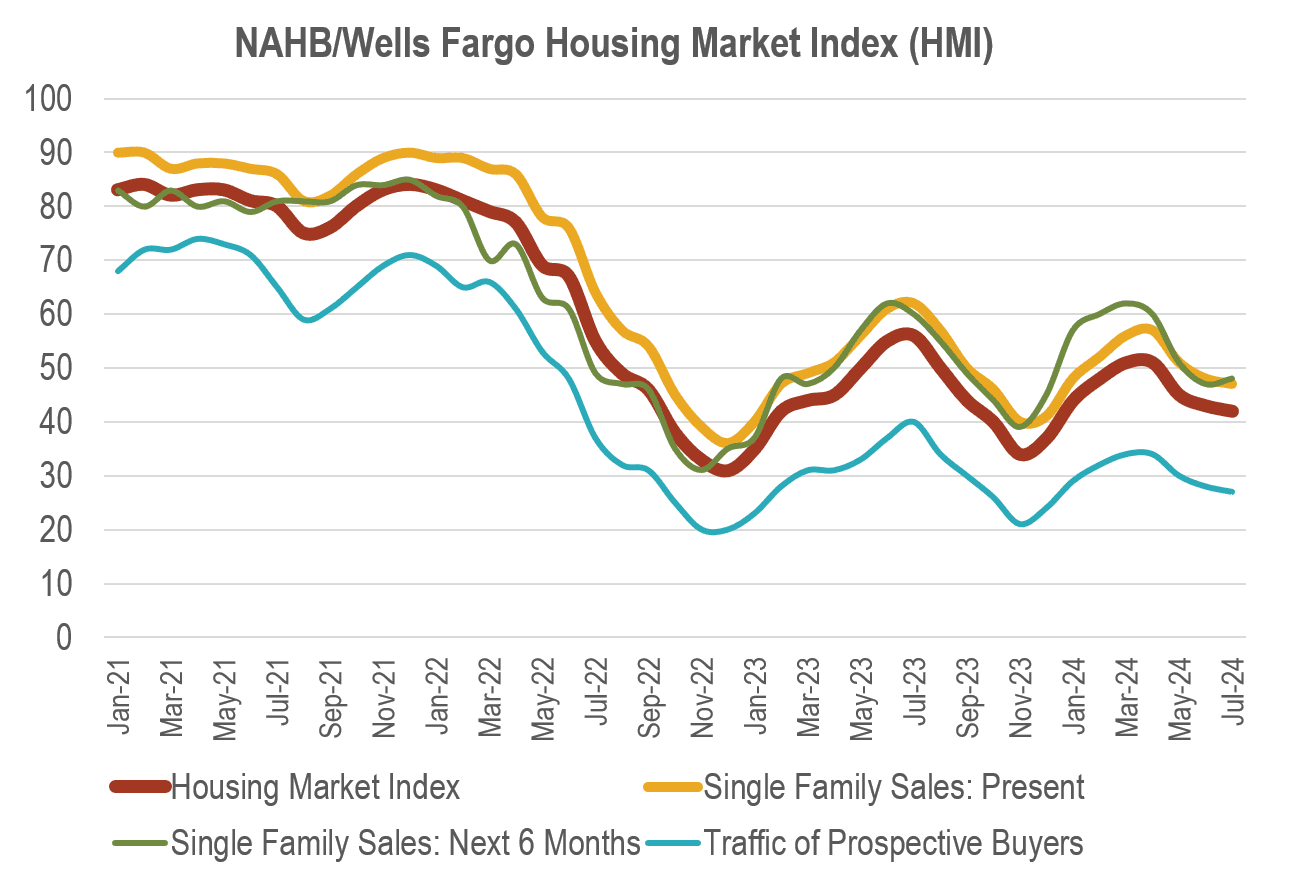
Given current homebuilder sentiment and the pace of new home sales, it is clear that mortgage rates remain a critical factor influencing homebuyer decisions. The current 30-year fixed mortgage rate is around 6.8%, which remains elevated compared to the five-year average of 4.7%. From a historical perspective, rates remain below the long-term average since 1971 of 7.7%, though buyer behavior has not yet reflected this reality, as shown by the inverse relationship between the slowing pace of single-family home sales plotted against increasing mortgage rates over the past two years.
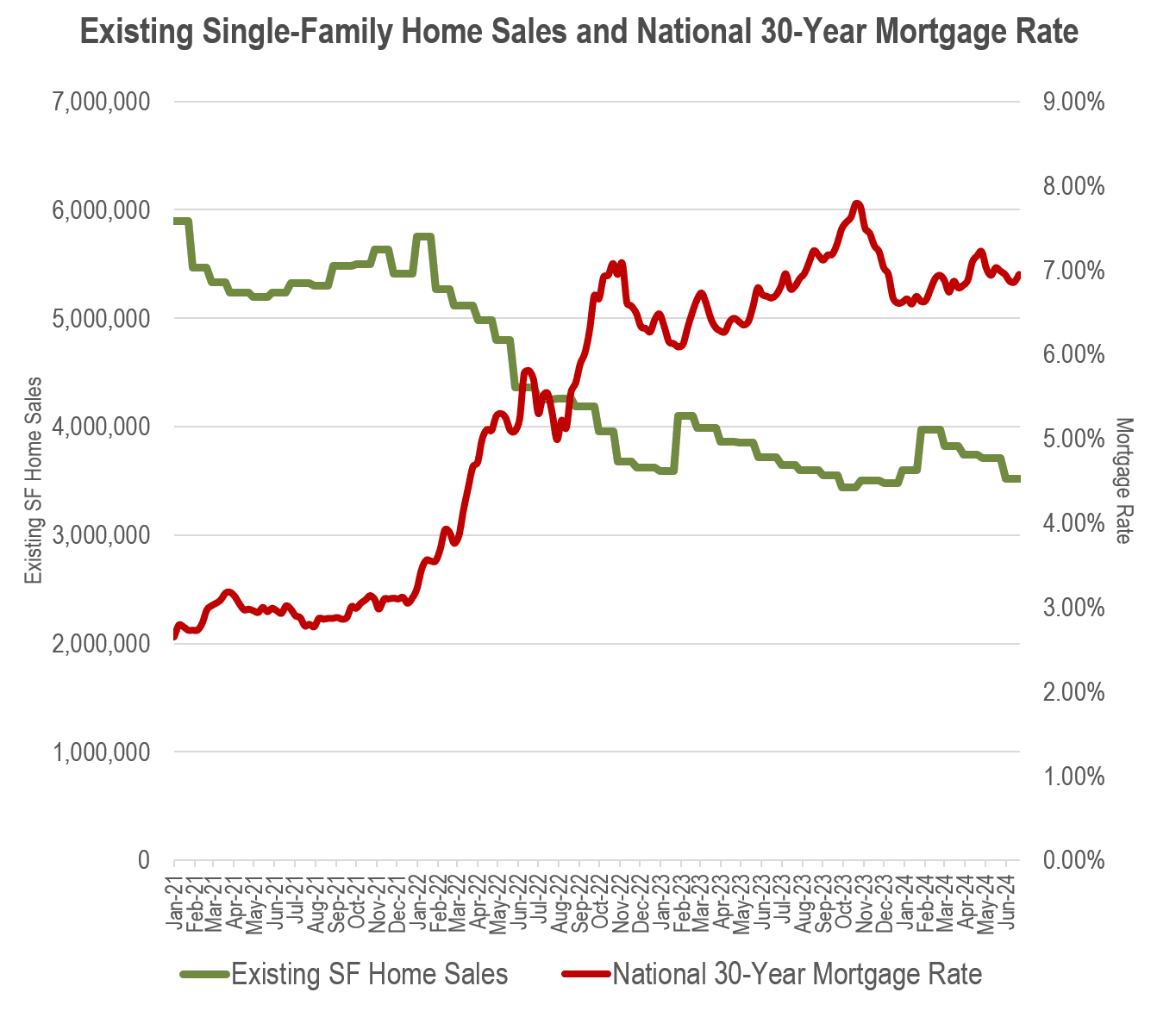
Forecasts from the Mortgage Bankers Association and Fannie Mae suggest a potential drop in rates to approximately 6.1% and 6.4%, respectively, by the end of 2024. This anticipated decline could provide some relief to homebuyers and potentially stimulate market activity in 2025. Support for further rate cuts may be possible given that inflation is currently less than 1% off the Fed target. Shelter CPI in particular decelerated to an annualized rate of 2.1% in June, its lowest level since 2021.
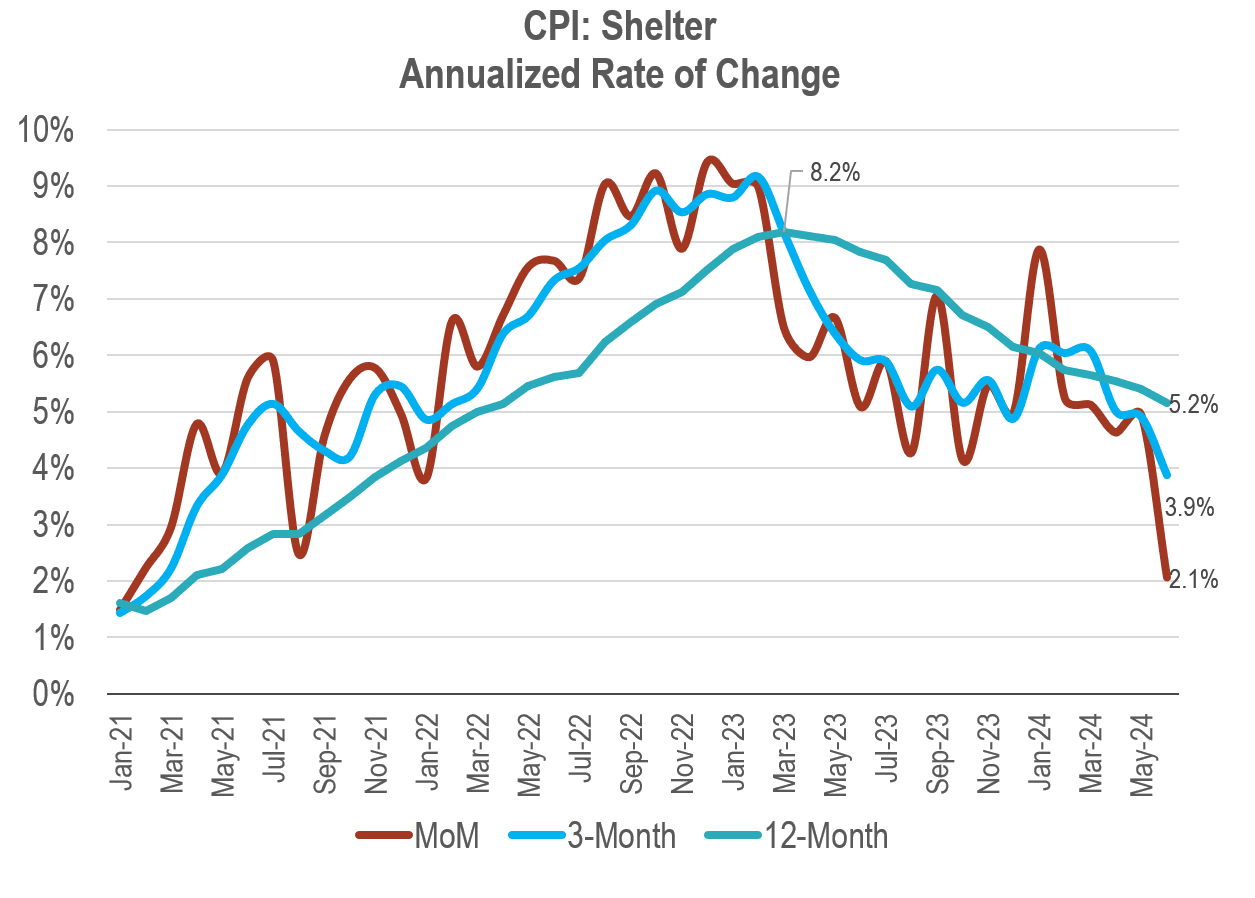
Related Articles
Overall, the mid-year 2024 real estate market presents a mixed picture. While sales among top-selling MPCs remain strong, the broader market for single-family homes faces challenges amid more cautious builder sentiment. Declining permit activity may further dampen projections for new home sales throughout the balance of the year. Mortgage rates continue to play a pivotal role, and the potential for future rate cuts could offer hope for increased buyer activity late in the year. As builders adapt their pricing strategies, housing innovation within the MPC sector and its perception as a haven during times of economic uncertainty may help sustain its relative strength in the housing market.
The ranking of Mid-Year 2024’s 50 top-selling communities is based on total net new home sales as reported by each individual community. To be included in our ranking, MPCs must have a number of features. True MPCs are developed from a comprehensive plan by a master developer, and incorporate a variety of housing types, sizes, and prices, with shared common space, amenities, and a vital public realm. The best examples of MPCs are developed with a strong vision and comprehensive plan that guide development and unify the community through distinctive signage, wayfinding, entry features, landscaping, and architectural/design standards. Beyond the built environment, MPCs differentiate themselves from typical suburban subdivisions in that they provide a means for interaction among neighbors in the sense of the word “community.” They foster an environment within which generations can live better in terms of housing and the community environment, and many offer educational opportunities, neighborhood shopping and services, and even employment centers to complement the residential neighborhoods. Although rooted in a vision, the most resilient MPCs have flexible master plans that are environmentally sensitive, market responsive, and nurture the lifestyles of their residents.
Given the above criteria, we do not include the collective sales of multiple, separate communities that are unified only through marketing efforts rather than a preconceived community vision, nor do we include communities that are a collection of subdivisions that have few unifying elements other than consistent signage and name.
More on the Top-Selling Master-Planned Communities
Article and research prepared by Gregg Logan, Managing Director, and Karl Pischke, Principal.
RCLCO provides real estate economics and market research services, strategic planning, and management consulting to real estate developers, investors, financial institutions, home builders, public agencies, and anchor institutions. Client’s turn to us for trusted, unbiased third party recommendations regarding highest and best use, product definition, market positioning/pricing, and absorption potential for any proposed development concept, site, or product type. Interested in learning more about RCLCO’s Master-Planned Community Services? Please visit us at www.rclco.com/master-planned-communities-services/.
Disclaimer: Reasonable efforts have been made to ensure that the data contained in this Advisory reflect accurate and timely information, and the data is believed to be reliable and comprehensive. The Advisory is based on estimates, assumptions, and other information developed by RCLCO from its independent research effort and general knowledge of the industry. This Advisory contains opinions that represent our view of reasonable expectations at this particular time, but our opinions are not offered as predictions or assurances that particular events will occur.


